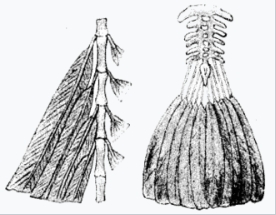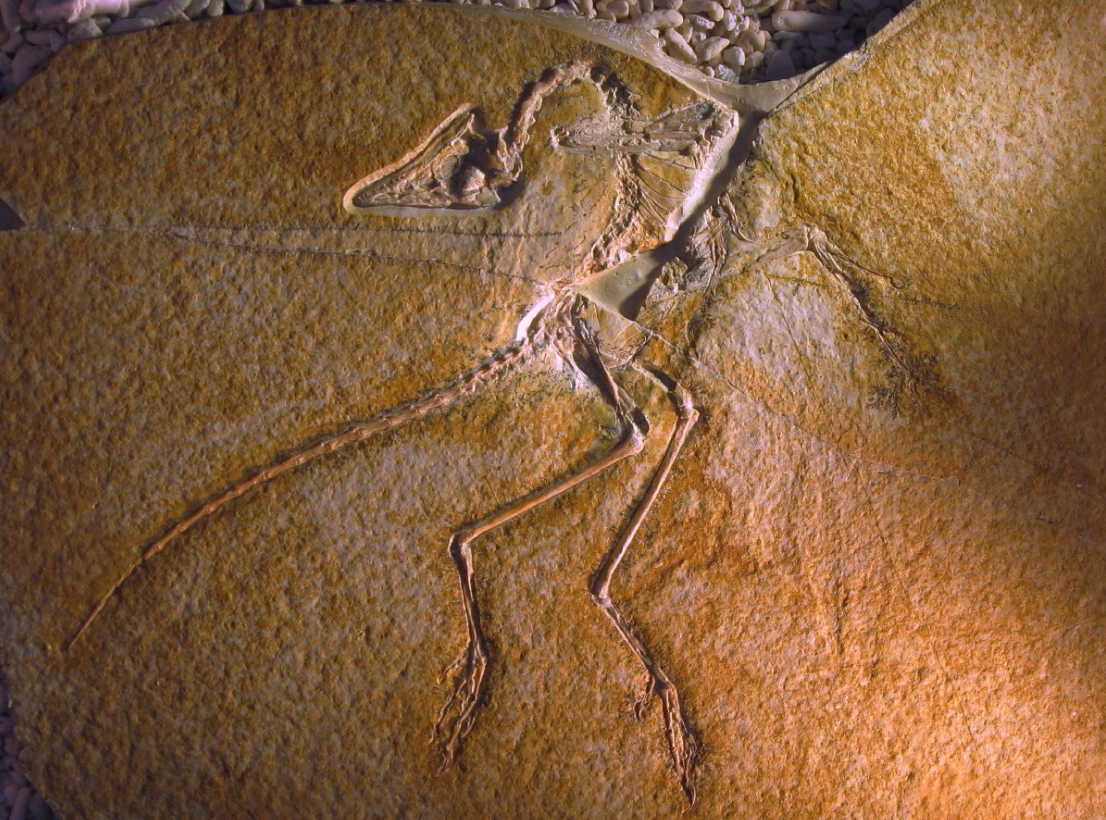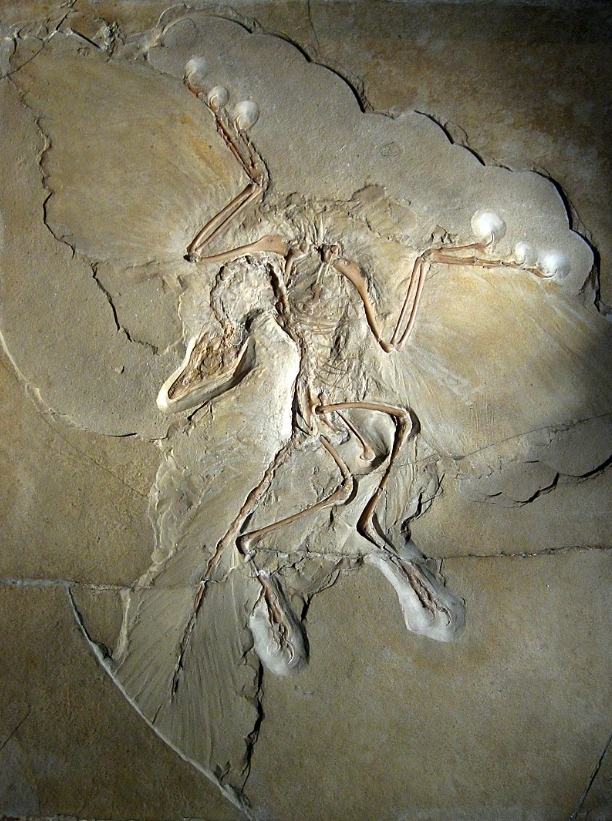Over the years, twelve body fossil specimens of Archaeopteryxhave been found. All of the fossils come from the limestone deposits, quarried for centuries, near Solnhofen, Germany.

The initial discovery, a single feather, was unearthed in 1860 or 1861 and described in 1861 by Hermann von Meyer. It is currently located at the Natural History Museum of Berlin. Though it was the initial holotype, there were indications that it might not have been from the same animal as the body fossils. In 2019 it was reported that laser imaging had revealed the structure of the quill (which had not been visible since some time after the feather was described), and that the feather was inconsistent with the morphology of all other Archaeopteryx feathers known, leading to the conclusion that it originated from another dinosaur. This conclusion was challenged in 2020 as being unlikely; the feather was identified on the basis of morphology as most likely having been an upper major primary covert feather.
The first skeleton, known as the London Specimen (BMNH 37001), was unearthed in 1861 near Langenaltheim, Germany, and perhaps given to local physician Karl Häberlein in return for medical services. He then sold it for £700 (roughly £83,000 in 2020) to the Natural History Museum in London, where it remains. Missing most of its head and neck, it was described in 1863 by Richard Owen as Archaeopteryx macrura, allowing for the possibility it did not belong to the same species as the feather. In the subsequent fourth edition of his On the Origin of Species, Charles Darwin described how some authors had maintained "that the whole class of birds came suddenly into existence during the eocene period; but now we know, on the authority of Professor Owen, that a bird certainly lived during the deposition of the upper greensand; and still more recently, that strange bird, the Archaeopteryx, with a long lizard-like tail, bearing a pair of feathers on each joint, and with its wings furnished with two free claws, has been discovered in the oolitic slates of Solnhofen. Hardly any recent discovery shows more forcibly than this how little we as yet know of the former inhabitants of the world."

The Greek word archaīos (ἀρχαῖος) means 'ancient, primeval'. Ptéryx primarily means 'wing', but it can also be just 'feather'. Meyer suggested this in his description. At first he referred to a single feather which appeared to resemble a modern bird's remex (wing feather), but he had heard of and been shown a rough sketch of the London specimen, to which he referred as a "Skelett eines mit ähnlichen Federn bedeckten Tieres" ("skeleton of an animal covered in similar feathers"). In German, this ambiguity is resolved by the term Schwinge which does not necessarily mean a wing used for flying. Urschwinge was the favoured translation of Archaeopteryx among German scholars in the late nineteenth century. In English, 'ancient pinion' offers a rough approximation to this.








